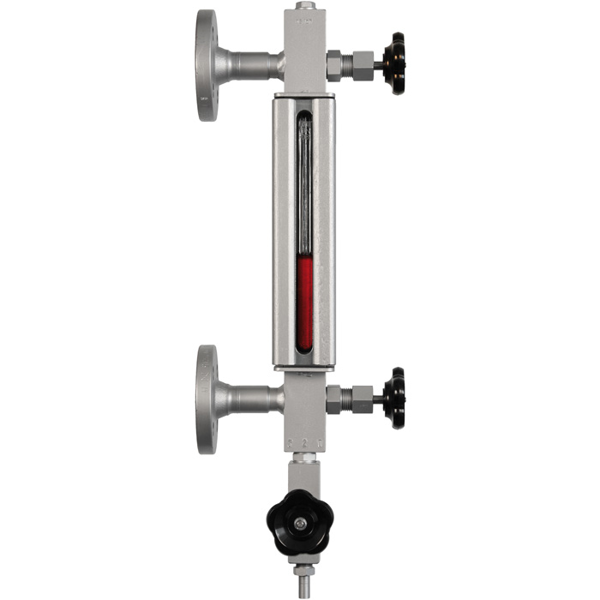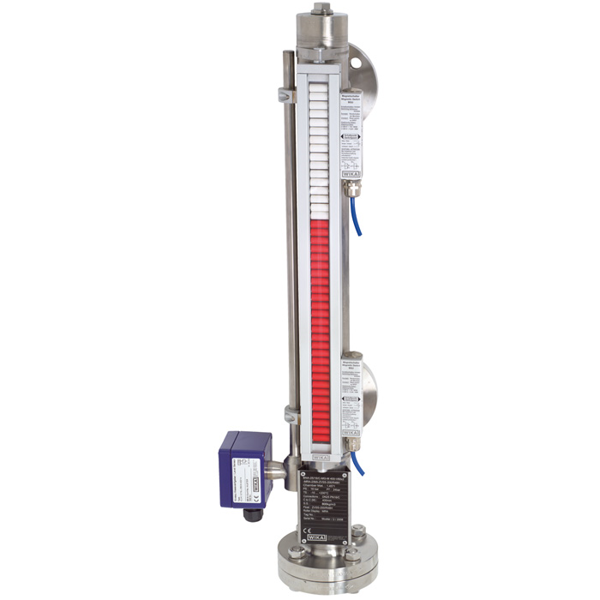Applications of the glass gauge:
- Continuous level indication without power supply
- Direct indication of the level
- Individual design and corrosion resistant materials make the products suitable for a broad range of applications
- Chemical, petrochemical industry, oil and natural gas extraction (on- and offshore), shipbuilding, machine building, power generating equipment, power plants
- Oil and gas, heat transfer and refrigeration systems, plants for cryogenics
Special features of the glass gauge:
- Process- and system-specific production
- Operating limits:
- Operating temperature: -196 … +374 °C 1)
- Operating pressure: Vacuum to 250 bar 1)
- Wide variety of different process connections and materials
- Illumination optional
- Heating and/or insulation optional
- Individual limit values. For application limits, the joint consideration of temperature and pressure is required!
Description of the glass gauge:
- The main element of the glass gauge is the body. Incorporated into this body are the liquid channel (if necessary the heating channel) and the seating faces for the chambered seals and sight glasses.
- Onto the body are mounted, or are already integrated, the valve heads and process connections. Drain or vent are also possible.
- The glasses and/or mica discs as well as the seals are fitted, secured and sealed with the aid of U-bolts and covers or pressure frames. Glasses from borosilicate glass in accordance with DIN 7081 are used for our glass gauges.
- For steam, the glasses can be used up to 243 °C, with mica design to 300 °C. For other media, temperatures up to 300 °C are possible, in special cases up to 374 °C. The use of mica is needed for specific applications.





